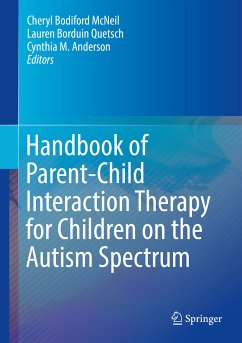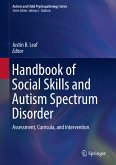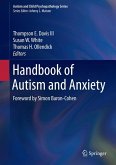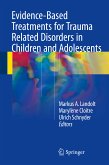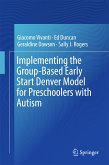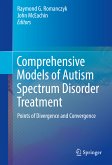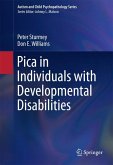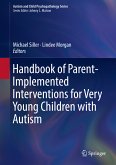Handbook of Parent-Child Interaction Therapy for Children on the Autism Spectrum (eBook, PDF)
Redaktion: McNeil, Cheryl Bodiford; Anderson, Cynthia M.; Quetsch, Lauren Borduin


Alle Infos zum eBook verschenken

Handbook of Parent-Child Interaction Therapy for Children on the Autism Spectrum (eBook, PDF)
Redaktion: McNeil, Cheryl Bodiford; Anderson, Cynthia M.; Quetsch, Lauren Borduin
- Format: PDF
- Merkliste
- Auf die Merkliste
- Bewerten Bewerten
- Teilen
- Produkt teilen
- Produkterinnerung
- Produkterinnerung

Hier können Sie sich einloggen

Bitte loggen Sie sich zunächst in Ihr Kundenkonto ein oder registrieren Sie sich bei bücher.de, um das eBook-Abo tolino select nutzen zu können.
This handbook offers a theoretical foundation for the adaptation of Parent-Child Interaction Therapy (PCIT) for children with autism spectrum disorder (ASD) and their families. The volume examines current treatments for children with ASD and provides a rationale for why PCIT is considered a strong option to address many of the concerns found within this population of children and families. It presents an overview of PCIT theory, the goals of PCIT, the unique aspects of the treatment, and the exceptional outcomes. The handbook demonstrates the versatility of PCIT in conjunction with standard…mehr
- Geräte: PC
- ohne Kopierschutz
- eBook Hilfe
- Größe: 14.8MB
![Handbook of Social Skills and Autism Spectrum Disorder (eBook, PDF) Handbook of Social Skills and Autism Spectrum Disorder (eBook, PDF)]() Handbook of Social Skills and Autism Spectrum Disorder (eBook, PDF)233,95 €
Handbook of Social Skills and Autism Spectrum Disorder (eBook, PDF)233,95 €![Handbook of Autism and Anxiety (eBook, PDF) Handbook of Autism and Anxiety (eBook, PDF)]() Handbook of Autism and Anxiety (eBook, PDF)81,95 €
Handbook of Autism and Anxiety (eBook, PDF)81,95 €- -47%11
![Evidence-Based Treatments for Trauma Related Disorders in Children and Adolescents (eBook, PDF) Evidence-Based Treatments for Trauma Related Disorders in Children and Adolescents (eBook, PDF)]() Evidence-Based Treatments for Trauma Related Disorders in Children and Adolescents (eBook, PDF)89,95 €
Evidence-Based Treatments for Trauma Related Disorders in Children and Adolescents (eBook, PDF)89,95 € ![Implementing the Group-Based Early Start Denver Model for Preschoolers with Autism (eBook, PDF) Implementing the Group-Based Early Start Denver Model for Preschoolers with Autism (eBook, PDF)]() Giacomo VivantiImplementing the Group-Based Early Start Denver Model for Preschoolers with Autism (eBook, PDF)69,95 €
Giacomo VivantiImplementing the Group-Based Early Start Denver Model for Preschoolers with Autism (eBook, PDF)69,95 €![Comprehensive Models of Autism Spectrum Disorder Treatment (eBook, PDF) Comprehensive Models of Autism Spectrum Disorder Treatment (eBook, PDF)]() Comprehensive Models of Autism Spectrum Disorder Treatment (eBook, PDF)65,95 €
Comprehensive Models of Autism Spectrum Disorder Treatment (eBook, PDF)65,95 €![Pica in Individuals with Developmental Disabilities (eBook, PDF) Pica in Individuals with Developmental Disabilities (eBook, PDF)]() Peter SturmeyPica in Individuals with Developmental Disabilities (eBook, PDF)97,95 €
Peter SturmeyPica in Individuals with Developmental Disabilities (eBook, PDF)97,95 €![Handbook of Parent-Implemented Interventions for Very Young Children with Autism (eBook, PDF) Handbook of Parent-Implemented Interventions for Very Young Children with Autism (eBook, PDF)]() Handbook of Parent-Implemented Interventions for Very Young Children with Autism (eBook, PDF)217,95 €
Handbook of Parent-Implemented Interventions for Very Young Children with Autism (eBook, PDF)217,95 €-
-
-
Topics featured in the Handbook include:
- A clinical description of Parent-Child Interaction Therapy.
- The effects of medication for individuals with ASD.
- The importance of parent-child interactions in social communication and development.
- Teaching complex social behavior to children with ASD.
- Internet-delivered PCIT (I-PCIT) for children with autism.
- Child-Directed Interaction treatments for children with ASD.
- Parent-Directed Interaction treatments for children on the autism spectrum.
The Handbook of Parent-Child Interaction Therapy for Children on the Autism Spectrum is a must-have resource for researchers, professors, clinicians/practitioners/therapists, and graduate students across many interrelated disciplines, including child and school psychology, behavioral therapy, social work, child and adolescent psychiatry, pediatrics, and family studies as well as occupational therapy, physical therapy, behavior analysis, and speech therapy.
Dieser Download kann aus rechtlichen Gründen nur mit Rechnungsadresse in A, B, BG, CY, CZ, D, DK, EW, E, FIN, F, GR, HR, H, IRL, I, LT, L, LR, M, NL, PL, P, R, S, SLO, SK ausgeliefert werden.
- Produktdetails
- Verlag: Springer International Publishing
- Seitenzahl: 761
- Erscheinungstermin: 6. Februar 2019
- Englisch
- ISBN-13: 9783030032135
- Artikelnr.: 55120904
- Verlag: Springer International Publishing
- Seitenzahl: 761
- Erscheinungstermin: 6. Februar 2019
- Englisch
- ISBN-13: 9783030032135
- Artikelnr.: 55120904
- Herstellerkennzeichnung Die Herstellerinformationen sind derzeit nicht verfügbar.
